There usually will be no mention of replacing clutch plates in a motorcycle user manual.
No mention of every 5000 miles or 10,000 miles for clutch plates. This is because clutch plates do not get damaged easily.
Then how does a clutch plate of a motorcycle burns?
The clutch plate burn can be because of these reasons – no free play in the clutch lever; the clutch plate not adjusted properly; shifting gears without pulling in the clutch; releasing the clutch lever suddenly; and careless riding with improper clutch usage.
When you drive your motorcycle with worn-out or burnt clutch plates you can easily feel the drop in the pickup as well as in the gear shifts.
So, replace the clutch plates whenever you see a drastic drop in the pickup.
Reasons For A Clutch Plate Burn
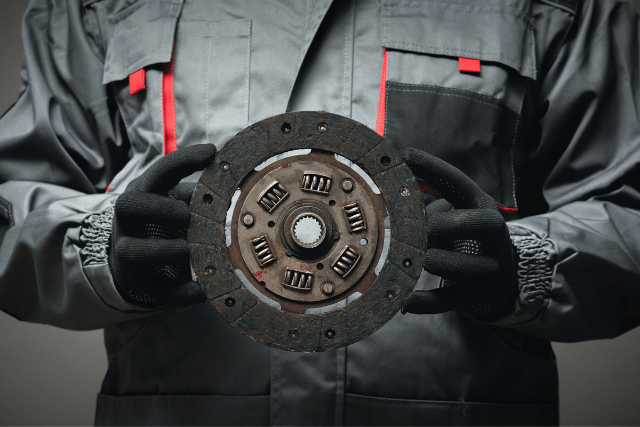
Here are the reasons for a motorcycle’s clutch plate burn:
- No Free Play in the Clutch Lever
- Clutch Plate Not Adjusted Properly
- Shifting Gears without Pulling in the Clutch
- Releasing the Clutch Lever Suddenly
- Careless Riding with Improper Clutch usage
The wear and tear of the clutch plates happen mainly because of the above-mentioned reasons.
You will hardly face a situation where you need to replace the clutch plate because of its natural wearing over time.
Now, let us look into these causes for clutch plate burn one by one.
#1 No Free Play In The Clutch Lever
Insufficient free play or slack in the clutch lever is a major problem.
Many mechanics and motorcycle service centers think that there should be no slack in the clutch wire. And accordingly, they don’t provide any free play. While too much slack can make the clutch slip, not providing any slack isn’t good either.

All motorcycle user manuals recommend a free play in the clutch lever, usually around 1cm to 2cm. Check the specifications in your bike’s user manual before making this adjustment.
While this reason is a minor cause, too much tightness in the clutch can amplify the effect to a major issue.
If the clutch lever is too tight without any free play, then pulling the clutch wire completely will not be enough to fully release the clutch plates. As a result, the clutch plate will face wear and tear every time you shift the gear.
#2 Clutch Plates Not Adjusted Properly
Another reason for clutch plate burn is when the clutch plates are not adjusted properly. In this case, there will be lots of rubs and friction between the clutch plates resulting in their damage.
Warped clutch plates will also result in their burning. If you have recently traveled a long distance on your motorcycle, then there is a chance that the clutch was overheated.

Since you were riding the bike under full power for long periods, the overheating might have led to warped clutch plates.
If warped clutch plates are the issue, then you need to visit your mechanic to fix the clutch plates. Even misalignment in clutch plates needs to be readjusted again.
#3 Shifting Gears Without Pulling In The Clutch
You need to pull in the clutch lever every time you are shifting the gears up or down.
While changing the gears, you first want the clutch plates to disengage, and then re-engage with the target gear.
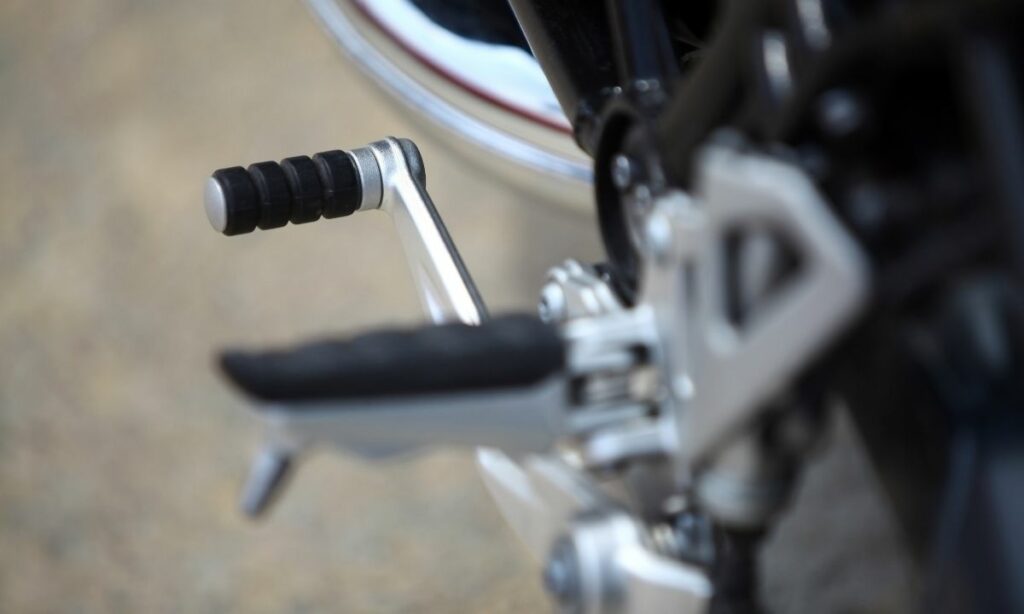
However, if you don’t use the clutch lever to shift gears, the gear transition will not be smooth and the hard engagement will affect the clutch plates and possibly result in a burn.
You should also shift gears at the right speed range. This will avoid motorcycle stalling along with not stressing the clutch plates.
So, not pulling in the clutch and going for a hard shifting of gears is one of the major reasons for burnt clutch plates. Make sure you pull in the clutch lever every time you are about to change the gear.
#4 Releasing The Clutch Lever Suddenly
While changing the gears in the motorcycle, you should be releasing the clutch lever slowly and gradually so that the clutch plates engage in a smooth manner.
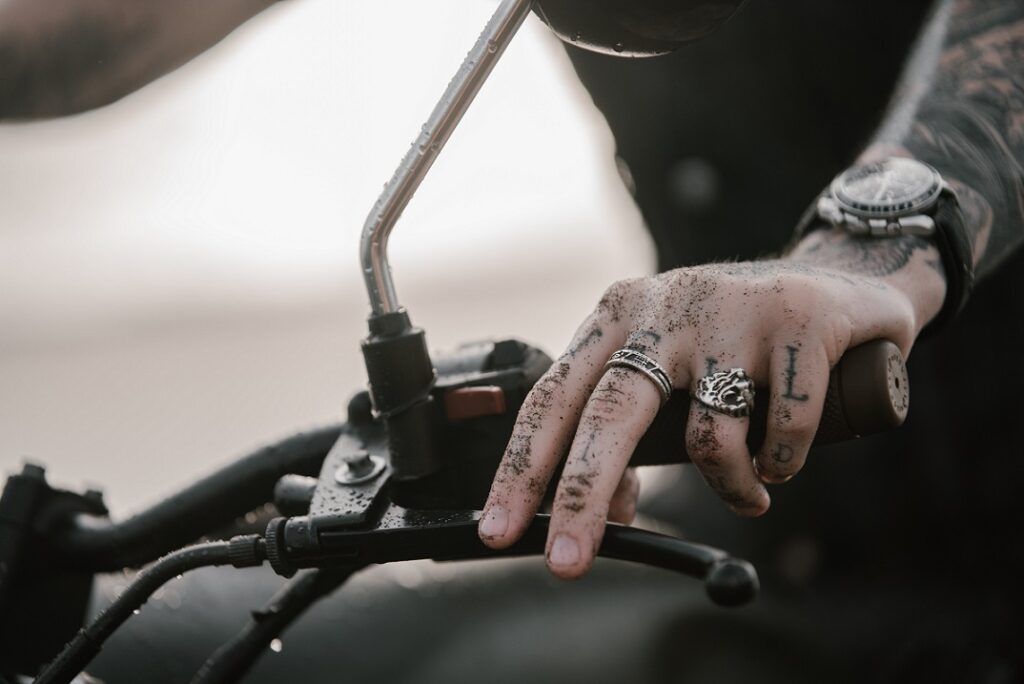
However, if you release the clutch too suddenly, the clutch plates will engage brashly. The sudden friction between the clutch plates will cause wear and tear on the plate surfaces and might even damage them.
Because of this brash engagement which might burn the plates, you should normally release the clutch lever in a gradual manner. If you feel a burning smell right after a sudden release of the clutch lever, you can infer that the harsh engagement of the plates has caused the burn.
#5 Careless Riding With Improper Clutch Usage
This is again one of the main causes of clutch plate burn. The rider does not know how to use the clutch properly.
Many riders, in busy traffic, lazy out in shifting down the gear and simply use the clutch to move the distance.
And then release the clutch to move forward with the current gear at high RPM. This is not the best practice and overusing this method will cause the burning of clutch plates.

Few riders, when stranded on an uphill, do not apply brakes to halt the motorcycle.
They will simply pull in the clutch and use their legs on the road to stay still.
While this is an okay thing to do once in a while, just staying still by using the clutch for an extended period of time with your bike in first gear is not good for your clutch plates.
How does the clutch plate burn?
Clutch plates burn because of high friction.
Wear and tear on clutch plates is normal. But the wearing can be drastic when there is too much friction and the temperature is high.
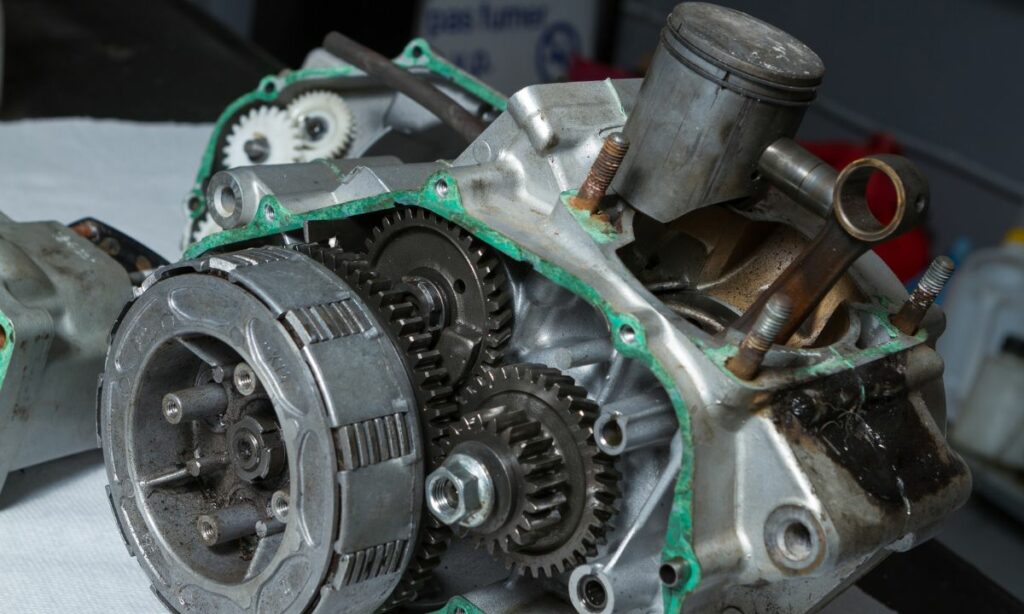
This excessive wear because of the reasons discussed is what results in the clutch plate burn.
In other words, a burnt clutch plate is nothing but a worn-out clutch plate.
Also, too much friction can also lead to warped or misaligned clutch plates. Which is equally worse as the burnt clutch plates.
What does a burnt clutch plate look like?
This is easy. A burnt clutch plate will be black in color and all greased up. A huge difference from a new and healthy clutch plate which would not have a burnt black color texture.
This is how a burnt clutch plate looks.
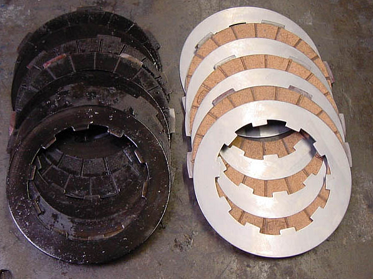
In addition, the burnt clutch plate might also have lots of damage, and scratches, and can even be warped in some places. A clear indication that the clutch plates need to be replaced.
Symptoms of bad clutch plates – How to tell?

We know the reasons now. But how to tell if the clutch plates are burnt in the motorcycle? For that, let’s look into the symptoms.
1. Drop in pickup
The first symptom to look for is the drop in motorcycle pickup whenever you accelerate. The bike will not pick up the speed fast.
No matter how hard you accelerate, the motorcycle will take some time to accelerate. Even then, you feel the speed is lower.

Another way to check is to turn the throttle slightly. Give it only a small twist. Instead of sensing the throttle, the slight twist goes unnoticed in your motorcycle.
That’s when you know something is wrong with the clutch plate.
2. Gear shifting is not smooth
Second symptom. You will have trouble shifting the gear smoothly.
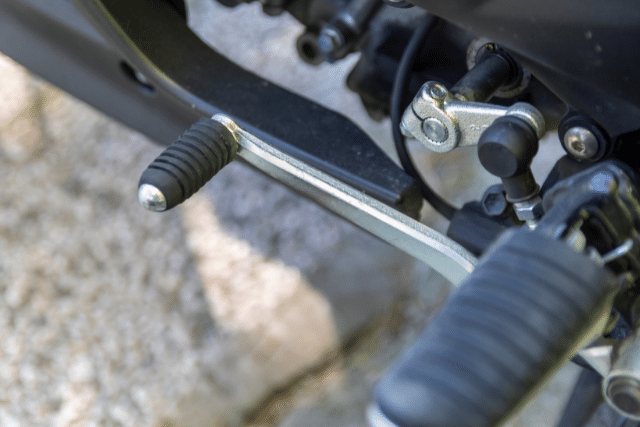
Either the gears won’t engage fast when you change the gears. Or they will make a clunking noise even if you use the clutch lever properly.
3. High rev but no speed
This is a major giveaway. You accelerate your motorcycle. There is a huge revving sound. The bike reves. But, the motorcycle is not picking up the speed as expected.
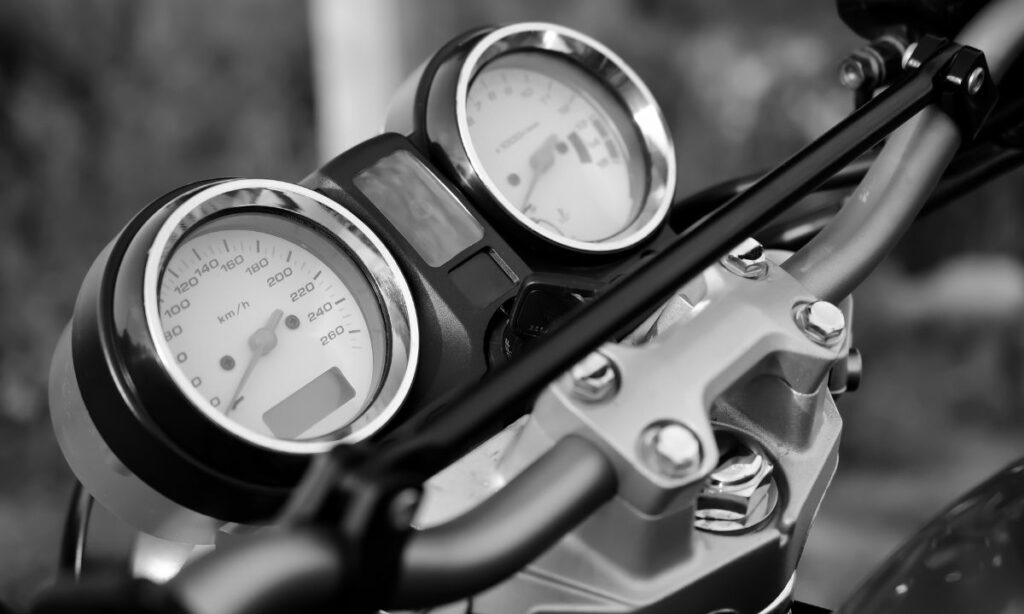
This disconnect between revving and speeding up is a major symptom. The moment happens, you need to check the clutch plates.
4. Clutch lever does not move freely
The last thing, the clutch lever will not move smoothly and freely.

You will notice this while shifting gears and pulling in the clutch.
The lever stops or feels as if it is getting stuck.
That’s another symptom to look for when the clutch plates are burnt or warped in your motorcycle.
What happens when the clutch plate is damaged?

If the clutch plate is damaged, the motorcycle will have problems accelerating, picking up speed, and changing the gears smoothly.
Along with these, comes the problem of low fuel economy.
The engine is revving but there is not much speeding up.
Then comes the wear and tear of the gears themselves if the clutch plates are not replaced soon.
Overall, the damage of burnt clutch plates starts with speeding up and accelerating problems. And then slowly move onto low fuel economy and wear and tear of other components problems.
When to replace the clutch plates?
There is no standard replacement time for motorcycle clutch plates. The manufacturer’s user manual will also be of no help here as you won’t find any specifications on replacing the clutch plates.
However, you need to replace the clutch plates when you see a drastic drop in the pickup. This is a major indication that the time is up for your clutch plates and you need to bring new ones.
When you drive your motorcycle with worn-out or burnt clutch plates you can easily feel the drop in the pickup as well as in the gear shifts. The gear changing will not be smooth and will feel jumpy.
So, replace the clutch plates whenever you see a drop in the pickup and the gear shifting is not at all smooth.
Preventive measures – How to not burn clutch plates
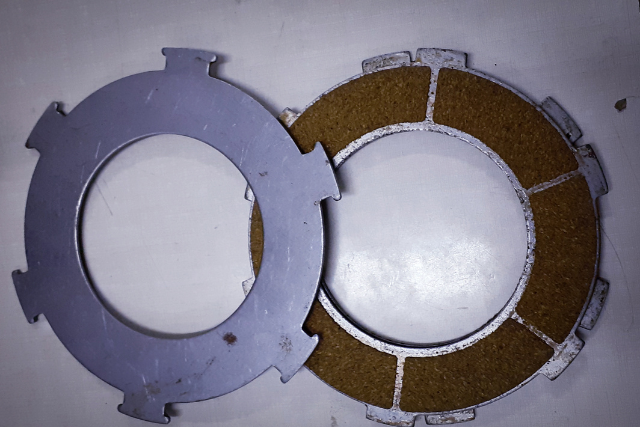
Here are a few tips to avoid clutch plate burning in your motorcycle.
First and foremost, you need to give some free play in the clutch lever in line with the user manual specifications.
Second, ensure proper clutch usage. Make sure you pull in the clutch lever every time you are about to change the gear. And don’t release the clutch lever too suddenly whenever you are shifting the gear up or down.
This is something basic yet you would be surprised how many bike riders are careless about this.
Third, change the oil at regular intervals. Good oil keeps the components lubricated and cool. Not a good oil, there will be lots of wear and tear.
Lastly, do not wait or postpone repair when the clutch plates are burnt, warped, or misaligned. You need to take the motorcycle to your mechanic or service center for the fix as soon as possible.
Before you go…
Here are a few more related posts for you: